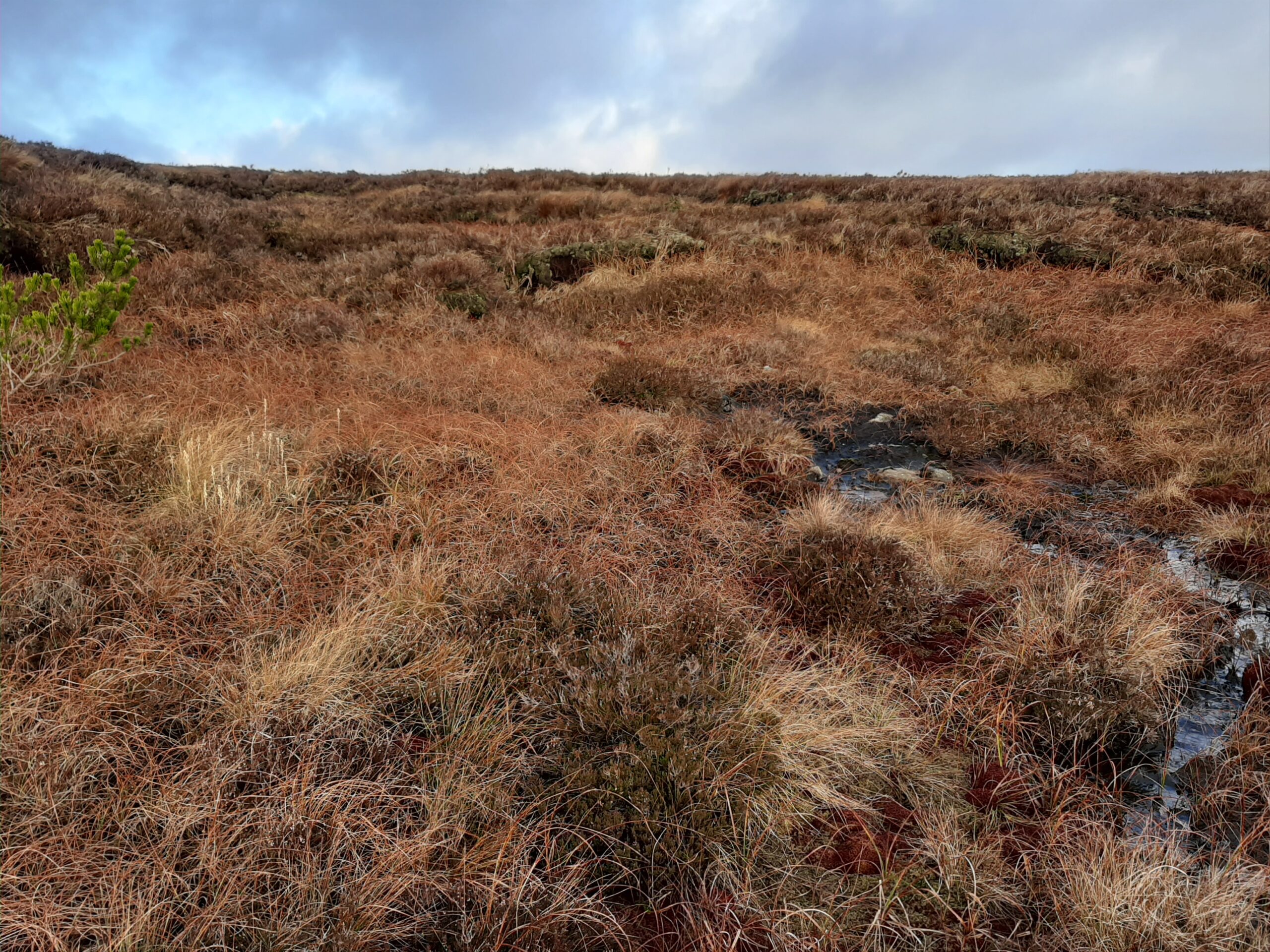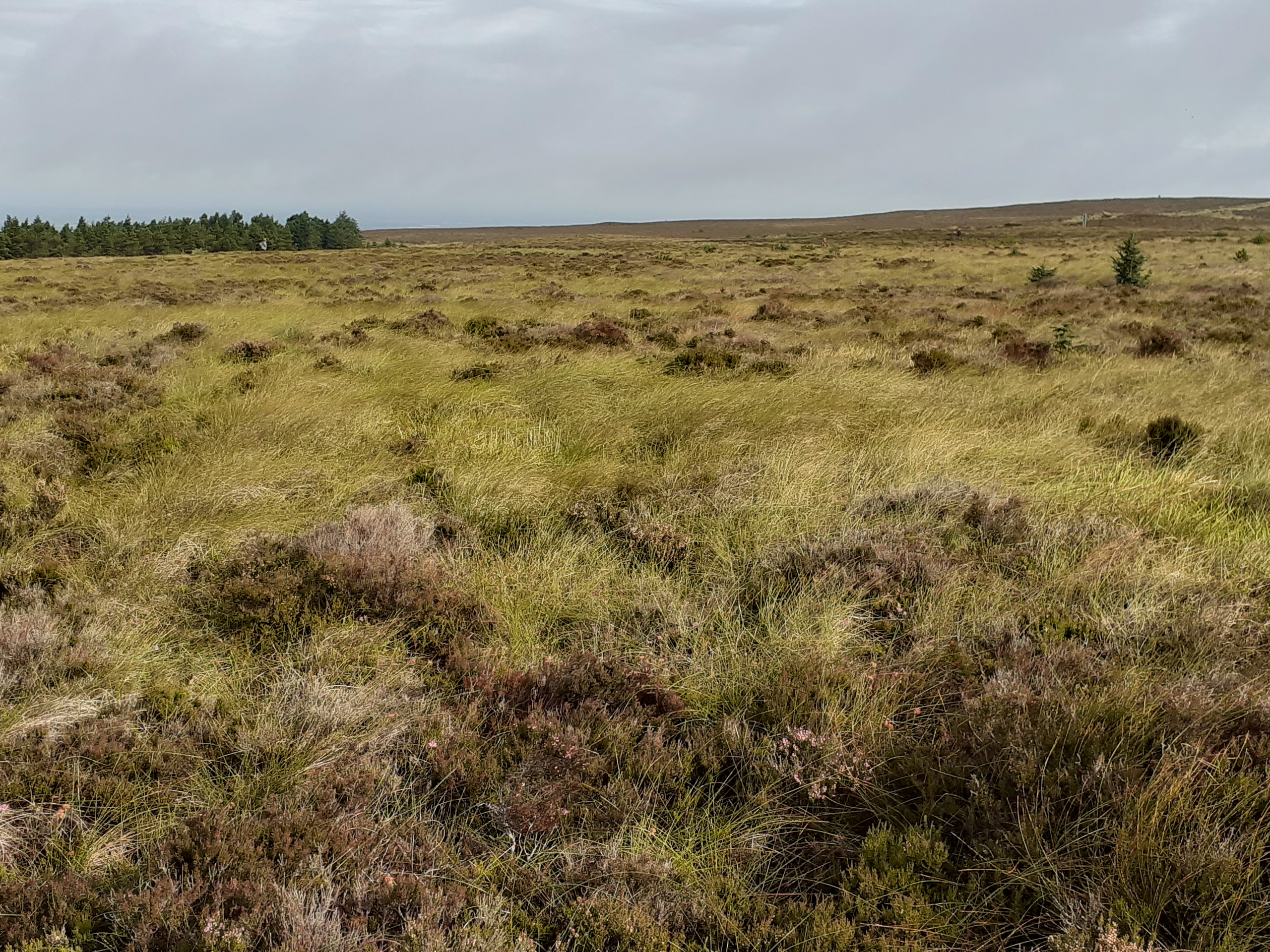The Slieve Bloom mountains consist of old red sandstone resting on Silurian rock layers. They are largely surrounded by the flat limestone plain which dominates the midlands of Ireland. Instead of craggy summits, the mountains are mostly rounded or plateaued which allows upland blanket bog to form. Slieve Bloom mountains is considered one of the best and least disturbed mountain blanket bog systems in Ireland. In uplands such as the Slieve Bloom Mountains, leaching of soil minerals and waterlogging due to high rainfall promoted the formation of blanket bog.
Blanket bog peat depths generally exceed one metre. Drier heathland typically has a peat depth of 0.5 metres or less and this feature is used as a rule of thumb to distinguish the two habitats, both of which are found within the nature reserve.
The ecological importance of blanket bogs is immense. In absorbing vast amounts of rainfall, they are a major factor in preventing flooding. They have a vital function in storing carbon, controlling the green house gases that exacerbate climate change
Principal tree is the Sitka (picea sitchensis) and Lodgepole pine (pinus contorta). Remainder of site mostly rough grassland used for hill farming.




